#ghostpie studio
Text
The weird and wonderful history of Kowloon as a digital interactive space - Part II
This article is the continuation of a previous post.
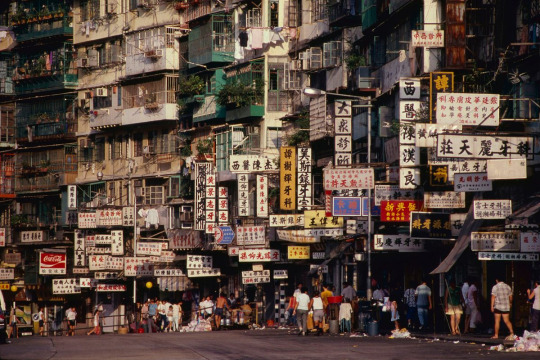
Any comprehensive history of 20th century Hong Kong is not complete without a chapter entirely dedicated to the architectural and urban planning puzzle that was Kowloon Walled City. Quite unlike any other slum in Asia or elsewhere in the world, the extreme conditions under which its inhabitants lived captured the attention of various international journalists and photographers whose reports of this accidental labyrinth, in turn, inspired some of the most remarkable artistic explorations of our time. In this regard, video games did not remain impervious to the powerfully stimulative imagery, as much a reference today as it was when its hardened concrete walls still stood tall.
Kowloon's Gate Suzaku VR - Jetman - 2017
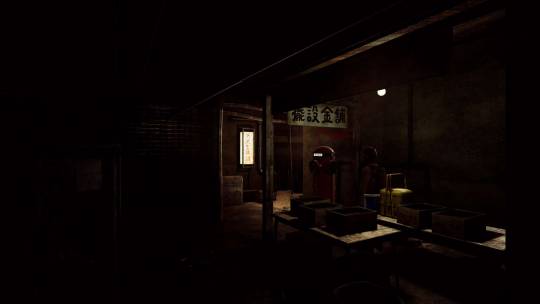
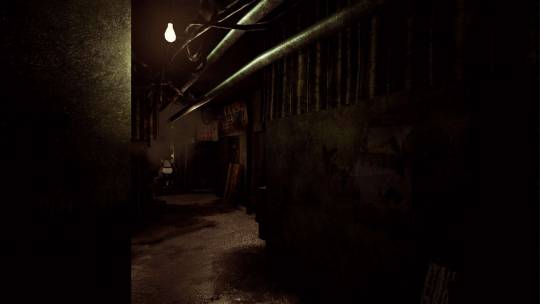
Kowloon's Gate made a most unexpected comeback twenty years after the original episode via the crowdfunded VR project Suzaku developed by Jetman, a studio founded by and composed almost exclusively of ex-SME/Zeque staff. While it is not the remaster many had hoped for, essentially consisting of a walking simulation through some redesigned locations from the original, it does a commendable job in faithfully replicating its instantly recognizable, light-starved alleyways in competent high-definition. It is also the only VR-compatible entry from this list, granting it a degree of uniqueness over its counterparts.
Stranglehold - Midway/Tiger Hill Productions - 2007
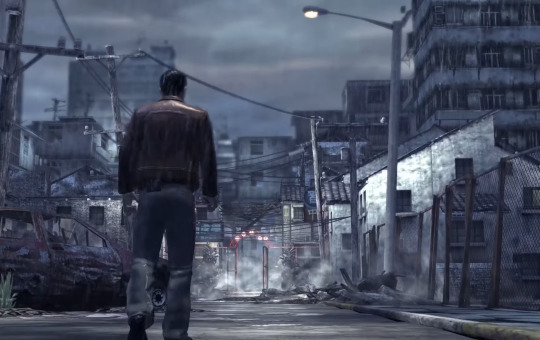
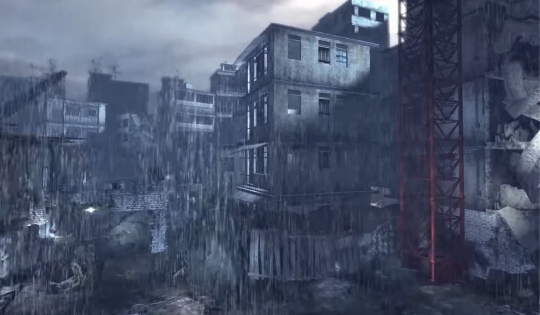
Stranglehold is the result of a collaboration with Hong Kong movie director John Woo, developed as a direct sequel to his heroic bloodshed classic Hard Boiled, featuring Chow Yun-fat in the role of detective 'Tequilla' Yuen in his unending confrontations with organized crime. One of the game's most unforgettable levels, Slums of Kowloon, takes place during a particularly rainy day, seemingly in those last days when the zone had been emptied of residents and demolition work was well underway. The visual representation of the quarter is suitably evocative, its buildings in complete state of disrepair, the remnants of local businesses or places of prayer still discernible from under the piles of steel and cement rubble.
Resident Evil 6 - Capcom - 2012


For all its shortcomings, Resident Evil 6 partly succeeds in taking the first two episodes' concept of parallel storylines and realizing it to a much fuller extent. Its choice of different characters translates into entirely different campaigns, locations and playing styles. The very first scene in Chris/Piers' campaign occurs in the fictional Chinese city of Lanshiang, modelled after real-life Hong Kong. The mayhem in the main streets forces the player to take a detour into a location named Poisawan, which bears a striking resemblance to the Kowloon district. Though an unofficial representation, it is among the most skilled replications of the scenery we find in the vast photographic repository of the area. The degree of minutiae with which the district's haphazard electric installation is replicated, alone, suffices to demonstrate a true commitment to authenticity.
Paranormal HK - Ghostpie Studio - 2020


Few would dispute that Kowloon is, itself, naturally conducive to sentiments of dread and anxiety. Paranormal HK is a 2020 made in China production reviving the defunct neighbourhood in a gripping, blood-curdling contemporary ghost story. The player is the cameraman of a paranormal-themed TV show exploring the zone during the evening of the Zhongyuan festival, a scheme suspiciously akin to that of Akira Ueda's 2004 game, Michigan: Report From Hell. As a result of the thorough research work performed by its creators, as well as the impeccable usage of contemporary 3D graphics techniques to achieve accurate lighting conditions, players may momentarily experience the feeling of walking into a photo of the actual city as it existed in the mid eighties.
Sifu - Sloclap - 2022
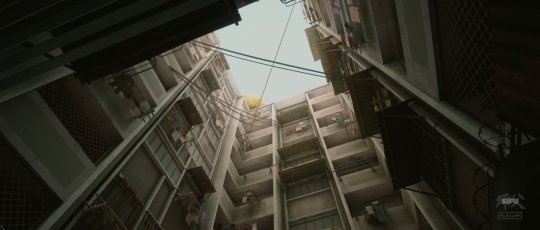
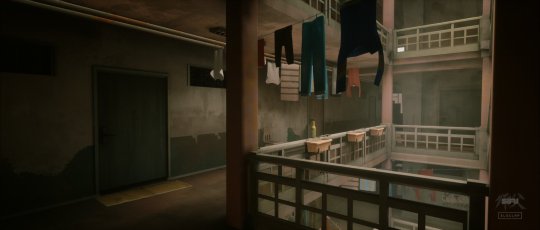

Notwithstanding of its renaissance during the 128-Bit era, the beat 'em up genre is commonly associated with the arcade games of the late 80s and 90s, the period of time when it flourished and, arguably, reached its zenith. The simplicity of controls and ease of access sufficed to attract players to the arcade cabinet, while the frequently extreme levels of difficulty of advanced levels ensured a steady flow of cash for arcade room owners and game development companies alike. Nevertheless, the genre has but perished and, in many aspects, recent years have indeed elevated it to unforeseeable degrees of complexity. Sifu, by Sloclap, synthesizes the elation of digital hand to hand combat simulation with the real-life complexity of mastering a martial art.
As is the case of previous entries in this list, Sifu makes no admitted reference to Kowloon or Hong Kong. However, the designers left little to the imagination in what pertains to their inspirations when taking on the task of constructing the game's environments. Another notable coincidence stems from the fact that this production was made possibly with the support from a celebrated independent game funding group going by the name Kowloon Nights.
Stray - BlueTwelve Studio - 2022


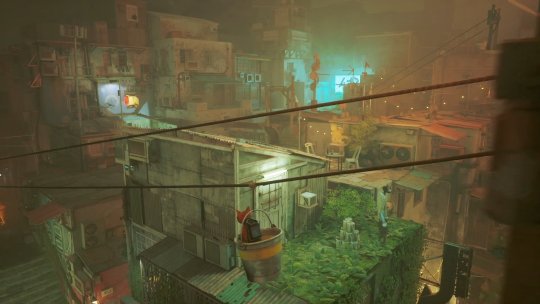
Stray is one of the most revered independent video games in recent memory, and justifiably so. The long development process yielded many benefits, judging from the consistency and attention to detail that engrossed many an avid player. That the main character is singularly charming feline may have played an equally crucial role.
The creators have made no effort to conceal the fact that the notorious Hong Kong district was a pivotal influence to the design of its nameless city. The first indication can be spotted in the game's earliest footage, in which a black cat traverses a street where a particularly conspicuous sign boasted the initials HK. Stray is less concerned with presenting a precise replica of Kowloon than it is about summoning the very essence of its atmosphere. Moreover, in an exquisitely poignant way, its ending lends an entirely new meaning to the term walled city. In the future, robots may well take the place of humans. Invariably, the Walled City is no more.
Slitterhead - Bokeh Game Studio - Work in Progress


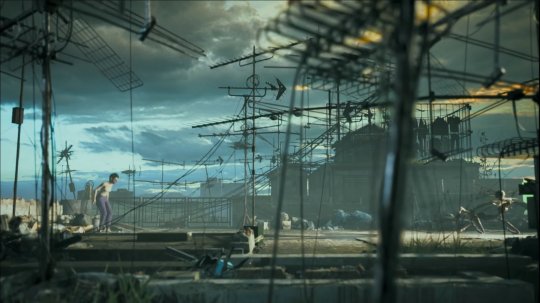
An sequence of unconscionable mistakes from the part of Sony Computer Entertainment's management galvanized Keiichiro Toyama to part ways with Japan Studio, as it once was, and establish his own game production label. Their debut title, Slitterhead, is described as a grotesque survival horror experience, a genre within which the author moves with matchless ease.
Among the few certainties regarding this project is the fact that it will take place prominently - if not exclusively - within the Kowloon City province. A wide variety of aspects included in the preview footage leave the viewer optimistic as to this being one of the most accomplished portrayals of the district ever seen in a video game. Subtle yet telling signs already demonstrate the creator's in-depth knowledge of the quarter's architecture and history.
Take, for instance, the suggestive image of the airplane flying mere meters above the top of the buildings. Although the growth of Kowloon was for the most part ungoverned, buildings did not rise above a certain height, even as inhabitants claimed for increased availability of space. This is due to the fact that airplanes landing at the nearby airport would be required to make their descent at relatively low altitude, performing a tight curve as they soared just above the enclave, thus preventing construction from expanding upwards. Another scene shows a child playing on the rooftops of the buildings, which once again is consistent with the documented habits of residents who, starved for sunlight and open space elsewhere within the city limits, had little alternative than to take the stairs all the way to the top.
Warehouse Kawasaki Arcade

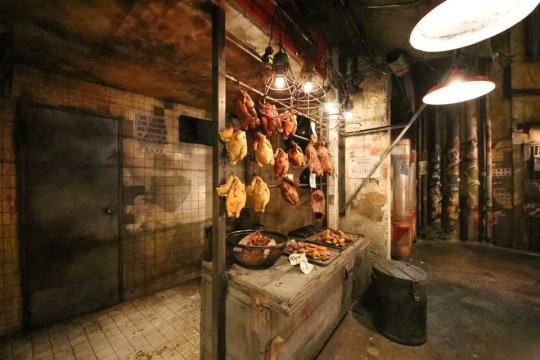

I would be remiss not to make some form of allusion to Warehouse Kawasaki, an arcade built to replicate the Walled City with unthinkable detail. Though its ultimate purpose was for visitors to engage in digital entertainment, the venue was scrupulously put together. Point in fact, many of the objects used in the construction of the five floor amusement centre were imported directly from Hong Kong. Like so many other Japanese arcades, it closed its doors in 2019.

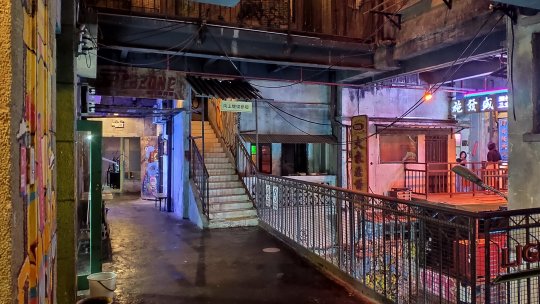
In recent years, a rather similar initiative was taken by the Chinese in their attempts to build unique mall spaces. The 文和友 malls in mainland China, found in Changsha, Guangzhou and Shenzhen, attempt to reproduce the walled city aesthetic. Local residents inform me that these are increasingly lacking in foot traffic, for which reason the majority of their stores are closed.
Other digital replicas of Kowloon

A number of other videogames set in or deriving inspiration from Kowloon could not be featured in this article.
A frequently cited reference in this context is the action/adventure game Fear Effect, one which I emphatically dispute. No doubt remains as to it being located in a futuristic version of Hong Kong, yet I could discern no parallels with the walled city, save for those scattered second-hand visual motifs that were no doubt imported from sci-fi classics such as Blade Runner or Ghost in the Shell.
The Utelek Complex stage of Deus Ex: Makind Divided presents a similar situation, where the overall atmosphere of the futuristic favela bears some resemblance to Kowloon, without meeting the specificity quota that would warrant a more comprehensive exploration.
The 2004 Shout! original Kowloon High-School Chronicle for the PS2 is a unique case, in that it borrows the city's name despite taking place in a massive, Tokyo underground dungeon that is later revealed to be a maze-like Egyptian pyramid. The odd choice of title remains unclear.
Shadowrun: Hong Kong game (screenshot above) contains a very direct mention of Kowloon as the place in which an entire episode comes to pass. Another project still in development, Kowloon's Curse (screenshot below), is following the lead of many popular independent horror games in recent memory by using a visual design and structure that elicits memories of the late Playstation/early Dreamcast era. A short prequel episode was made available earlier this year, for free.
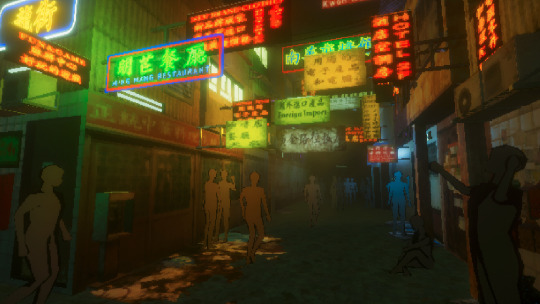
Additionally, I refrained from mentioning the Kowloon maps in Call of Duty: Black Ops or Counter-Strike: Global Offensive, as I perceive both games to be insufficiently relevant to merit study or contemplation.
A space that refuses to be forgotten
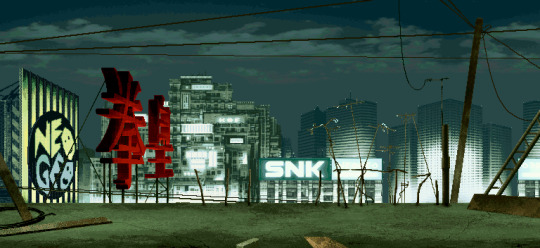
(China rooftop stage from The King of Fighters 2003)
It would be a gross overstatement to claim that Kowloon is a recurring location or level design motif in videogames. The relationship between digital games and the real life ghetto has been one of sporadic references. What makes the subject so engrossing pertains to the quality of the relationship, particularly that of a small cadre from among the titles featured in this article. Kowloon's Gate was one of the most relevant game creations of the 32-Bit era, a game deserving of reverence and cult following inside and outside Japan. Likewise, Shenmue II is the second instalment of a truly ground-breaking and highly advertised series whose production costs alone were unmatched until quite recently.
Moreover, this is an affair that is far from concluded. The unexpectedly high number of allusions to Kowloon in videogames released or revealed just last yet demonstrates that its aesthetic is still very much present in the minds and hearts of artists and designers working in the field. The walled city lives on as a digital demarcation that is certain to resurface time and again in years to come.
#kowloon's gate#kowloon's gate VR suzaku#jetman#stranglehold#john woo#kowloon walled city#hong kong#resident evil 6#poisawan#paranormal hk#ghostpie studio#sifu#kowloon nights#stray#slitterhead#bokeh game studio#keiichiro toyama#Warehouse Kawasaki#arcade#文和友
155 notes
·
View notes
Text
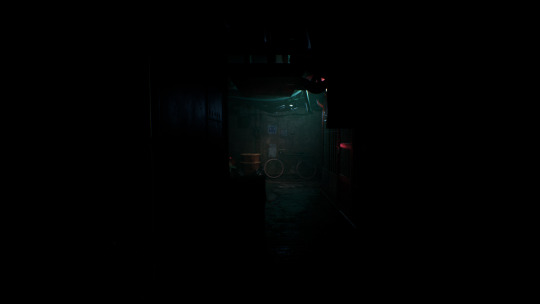

港詭實錄ParanormalHK is an indie Hong Kong horror game developed by Ghostpie Studios and released in 2020.
28 notes
·
View notes
Text
[Game Review] Paranormal HK 🇭🇰
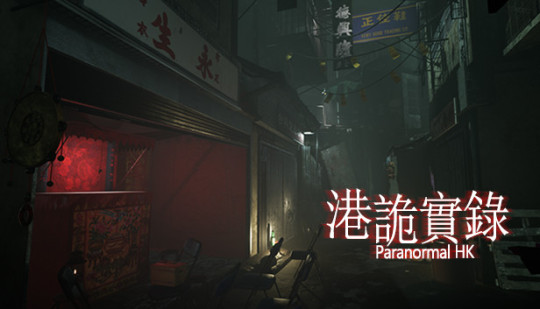
Paranormal HK is a first person horror game about Urban legends of Hong Kong, China. The story is about a crew of online supernatural channel “Beyond the Invisible” went to Kowloon Walled City to film a short movie for their latest episode and encountered something out of their expectations. "
During the night of Hungry Ghost Festival, a group of young people gathered in Kowloon Walled City. They intended to film a short video for their online supernatural channel ”Beyond the Invisible". Although a few accidents happened at the beginning ,they insisted to film the show.
The members of the crew disappeared one after another. Also, the actress, Kathy’s behaviour became very weird. The strange atmosphere enveloped the entire program group, and Ah Lok was also caught in it. In the face of all sorts of strange phenomena that have exceeded everyone’s perception, Ah Lok can't help wondering if someone has inadvertently touched some taboos. Although the doubts are overwhelming, , but Lok has no interest in it. All he wants is to find Kathy as soon as possible and take her away from here...


I picked up this game not only because it was fairly inexpensive but it didn’t feel like it was made with a western audience in mind. The company behind ParanormalHK, GhostPie Studio is based in Hong kong, where this game is set. Usually when I find an asian horror, it’s Japanese, they’re just more popular for obvious reasons. So this was a good opportunity to see what China, or, my apologies, what Hong Kong specifically had to offer. Now the game does launch in either mandarin or cantonese, so you will need to navigate the menu to find the English option. This will allow you to enjoy the cutscenes with english subtitles as well as read the notes.
(設置 → 系統 → Then select English from the drop down menu.)

There are a couple of important elements to note when playing ParanormalHK. It works as a series of ghost stories or urban legends set within the once Kowloon Walled City. Kowloon was described as being “ungoverned” and densely populated, 50,000 residents populated (yikes). It was the kind of place you’d look at and wonder how people could live like that, and they did, until 1993 when it was demolished. The game doesn’t outright touch on the societal issues going on at the time but it might give you a little more understanding of why the environment is the way it is and why there are back alley medical facilities.
The second being that it is set during the hungry ghost festival, or Zhongyuan/Yulanpen. This period is celebrated by Buddhists and Taoists during the 7th lunar month(august), also known as Ghost month. The belief is that the gates of “hell” open permitting the souls of the deceased to roam among the living, who offer food and drink to distract restless spirits and welcome visiting loved ones. I believe this could equate to the purpose of Sugar Skulls, a Calavera intended to be enjoyed by the visiting deceased during Día de Muertos. You’ll notice in the first chapter the sheer amount of rice bowls left outside of apartment doors. You might also notice some doors have the chinese character for luck 福, placed upside down. This is symbolic of luck arriving down to them from heaven, or literally “pouring” out onto them from above. So we have a good amount of visual clues to enhance the message that some kind of festival is involved in these supernatural events, even if you didn’t quite catch what Kathy was saying in her intro.
So already we have a pretty unique story setting, however, there are A LOT of characters to keep track of. For the most part, the story revolves around yourself;Ah Lok, Kathy Chan and the mysterious GhostFace. The rest of the character’s stories will mostly be told through a series of notes, and as I mentioned, the game is initially in mandarin, so you might find errors in the translation, but it’s reads well enough. The only time I felt there was a translation issue was more where there was no translation on offer, particularly in the scene where you use the Chinese Ouija board or the names on the back of a photograph. As long as you can distinguish the Beyond the invisible crew members from the other backstory characters, you should be fine. I actually found piecing the notes together and trying to figure out how the stories might be connected enjoyable and even on their own stand quite well.
There are 3 stories covered by Ah lok and the crew that we investigate over the course of the game. I don't know the specifics of the latter 2 but the first story According to Youtube user Thunder Cross Split Attack, is a real urban legend.
"After the mother died, her corpse rotted with the 6 years old child still inside. Whenever it is dinner time, there were always the smell of food coming out. Until one day, the neighbors called the police to investigate the smell since the corpse was there to rot. The police noted the death of a woman on the bed and a 6year old child playing. However the rice was being cooked and some dishes were prepared."
It’s really not hard to come up with ghost stories when there is an abundance of tall tales out there and these guys really used this well. Along with the english patch for the game, I would have appreciated some extra cultural notes here and there to learn more about the culture of this area as my ability to google can only go so far.


Throughout the game there are some light puzzles. These were on the easier side of things but still enjoyable and well paced throughout the story. My main critic is our interaction with the enemies. Almost all encounters were cat and mouse-esque, should the enemy spot you, you needed to make a run for the nearest closet and wait for them to get bored and move on. I actually prefer games where you can’t fight back the traditional way you would in games but it’s not always done well. Enemies movements were something to be desired and I found it impossible to judge their line of sight, which would more often than not, cause me to be detected, having to flee and restart quite lengthy stealth sections. Ontop of all that, running didn’t feel like it should when you’re trying not to be murdered by your unatturally sharp-toothed posessed colleague.
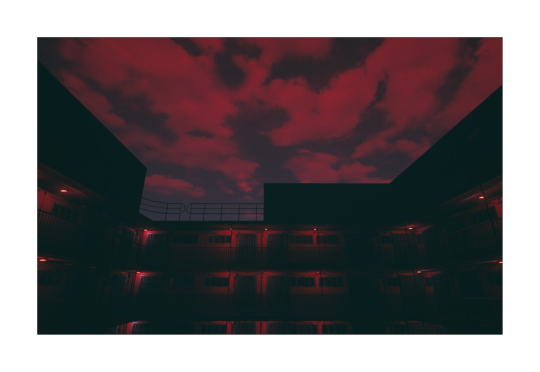

Obviously I have never been to Hong Kong let alone Kowloon but from pictures on Google you can tell this developer has done an incredible job at replicating the environment in such a small space. I did notice one comment on Steam from a Chinese user who stated that playing this game really hit home for them. Whilst exploring the environment, there was light without a light source but honestly, I can’t knock the job that was done. The detail in the environment, the atmosphere and the lighting was considerably well done given the game’s price range and small studio name.


The game leaves us at a sort of cliff hanger, and as I mentioned earlier, I have been piecing the stories together and have a few theories of my own that I am hoping will be covered in a sequel which I am holding out for.
______________________________________________________________
My Rating: ⭐️ ⭐️⭐️ ★ ★
______________________________________________________________

youtube
1 note
·
View note